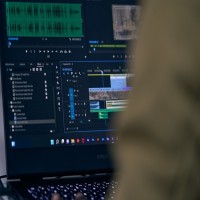“Describe Video Cuts 2024.”
Standard Video Cut
A standard video cut is a simple editing technique where one shot is replaced by another shot in a direct manner. Creating a straightforward transition between scenes or perspectives in a video.
A standard video cut is a fundamental editing technique used in filmmaking and video production. It involves transitioning from one shot to another by replacing the current shot with the next one. This type of cut is straightforward and seamless. Providing a natural flow between scenes or perspectives in the video.
A standard video cut is the most common and straightforward editing technique used in filmmaking and video production. It involves transitioning from one shot to another by simply replacing the current shot with the next one. This type of cut is effective in maintaining continuity and creating a smooth flow between scenes or perspectives in the video.
Jump Cuts
A jump cut is an abrupt transition between two shots of the same subject. Where the camera angle, framing, or position changes slightly, creating a discontinuity in the visual flow. It typically occurs within the same scene or sequence. Giving the impression of a sudden jump forward in time or space. Jump cuts are often used for stylistic purposes, to convey a sense of urgency, or to compress time in a montage sequence. While they can add dynamism to a scene, jump cuts can also be disorienting if not used thoughtfully.
Jump cuts are characterized by their abrupt transition between two shots of the same subject. Where there is a noticeable change in the framing, angle, or position of the camera. This editing technique creates a visual discontinuity and can give the impression of a sudden leap. Forward in time or space within the same scene. Jump cuts are often used for stylistic effects. To convey a sense of urgency, or to compress time in a montage sequence. However, they can also be disorienting to viewers if not executed thoughtfully.
Cross Cuts
A Cross-cut, also known as parallel editing. A film editing technique that involves alternating between two or more separate scenes. Storylines that are happening simultaneously but in different locations. This editing technique allows filmmakers to show multiple events unfolding concurrently, building tension, suspense, or juxtaposition between the different narratives. Cross-cuts are commonly used to create a sense of urgency, illustrate cause-and-effect relationships, or provide context by showing different perspectives of the same event. They are a powerful storytelling tool that adds complexity and depth to a film’s narrative structure.
Match Cut
A match cut is a film editing technique where a transition occurs between two shots that share a visual or audio similarity. This type of cut is often used to create a seamless and smooth transition between scenes or to establish a thematic connection between two different elements in the film. Match cuts can be based on visual elements such as shape, color, or movement, as well as auditory elements such as sound effects or dialogue. They are effective in enhancing continuity, rhythm, and cohesion in the storytelling process, providing viewers with a sense of coherence and unity within the film.
A video cut refers to a transition in a video where one shot is replaced by another shot. This basic editing technique is used to change scenes, viewpoints, or perspectives within a video. Video cuts can vary in style and intensity, ranging from seamless and unnoticeable transitions to abrupt and jarring changes between shots. They are fundamental to the editing process and play a crucial role in shaping the pacing, rhythm, and narrative flow of a video production. “Describe Video Cuts 2024.”
